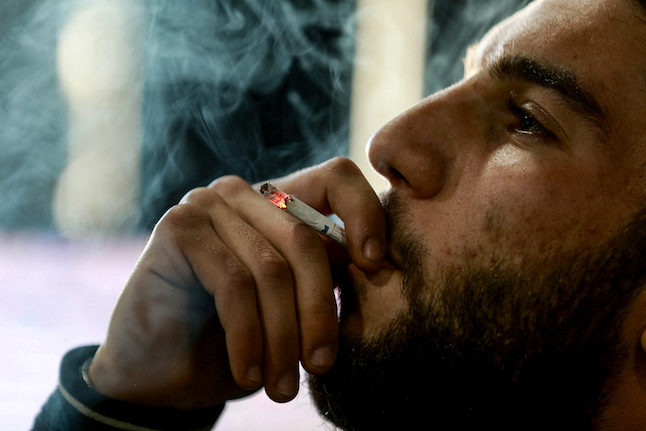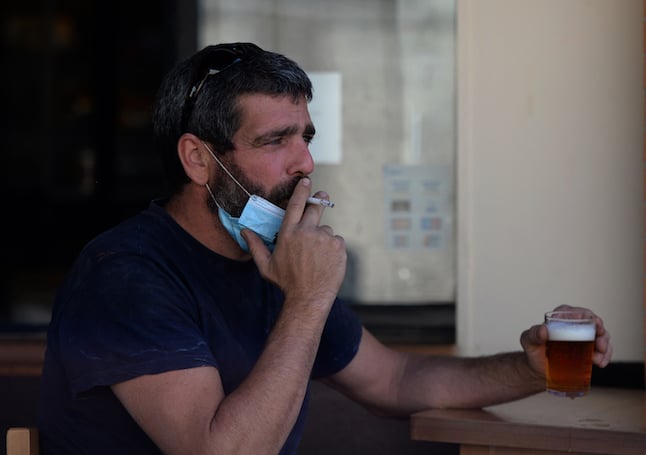“Therapeutic cannavaping”, they argued, should be examined as an alternative to existing medical treatments which can come in the form of a syrup, pill, mouth spray, skin patch, suppository, or a plain-old spliff.
The team copied an improvised method popular among marijuana afficionados using butane gas to extract and concentrate cannabinoids — the active, high-causing compounds of cannabis.
“We were inspired by what is done illegally, underground, on the web fora,” study co-author Vincent Varlet, a biochemist and toxicologist from the University Centre of Legal Medicine in Lausanne, told AFP.
“Normally, they use this form of cannabinoids to get high. Based on what is done illegally, we found that it could be interesting” for the medical field.
The method yields super-concentrated “dabs” of butane hash oil (BHO) comprising about 70-80 percent THCa, the precursor of THC or tetrahydrocannabinol, which is the psychoactive ingredient. THCa is transformed into THC at high heat.
Usually the dabs are burnt and the fumes inhaled. But for the study, the team mixed their activated BHO paste into commercially-available e-cigarette liquid at different concentrations — three, five or ten percent.
They then put “vaping machines” to work: sucking at the e-cigarettes and blowing out vapour, which was measured for its THC content, according to results published in the nature journal Scientific Reports.
“Cannavaping appears to be a gentle, efficient, user-friendly and safe alternative method for cannabis smoking for medical cannabis delivery,” the team concluded with a nod to “the creativity of cannabis users”.
It was also more reliable than consuming cannabinoid pills or foods which are poorly and erratically absorbed, said Varlet.
Safer pain relief?
Battery-powered e-cigarettes heat up liquids containing artificial flavourings, with or without nicotine, to release a vapour which is inhaled and exhaled much like smoke.
They are touted as safer than the real thing, and an aide for giving up cancer-causing tobacco — which is also an ingredient of the traditional cannabis joint.
Cannabis-infused e-liquids are advertised online, along with a rash of recipes for making your own.
Medical marijuana can be legally prescribed in some countries for pain relief, appetite stimulation, nausea reduction or the relief of muscle spasms.
A challenge, said Varlet, was to keep cannabis intended for therapeutic use out of the hands of recreational high-seekers.
One way to do that was to have legal drugs with microdoses of cannabinoids.
“We have calculated that to have the same dose of what is present in a real cigarette joint… with tobacco, we have to vape between 80-90 puffs” of the 10-percent BHO liquid, said Varlet.
“Eighty puffs constitutes a rebuttal to getting high,” he added, when a few drags from a joint will do.
“The take-home message of our article is that vaping is less harmful than smoking, so you can be sure that cannavaping is less harmful than cannabis smoking for medical purposes,” said Varlet, adding there was no plan to patent or sell the product.
“Today, we have set the cat among the pigeons. This is just the first step, and we need to see how the scientific community is going to welcome this kind of possibility.”




 Please whitelist us to continue reading.
Please whitelist us to continue reading.
Member comments